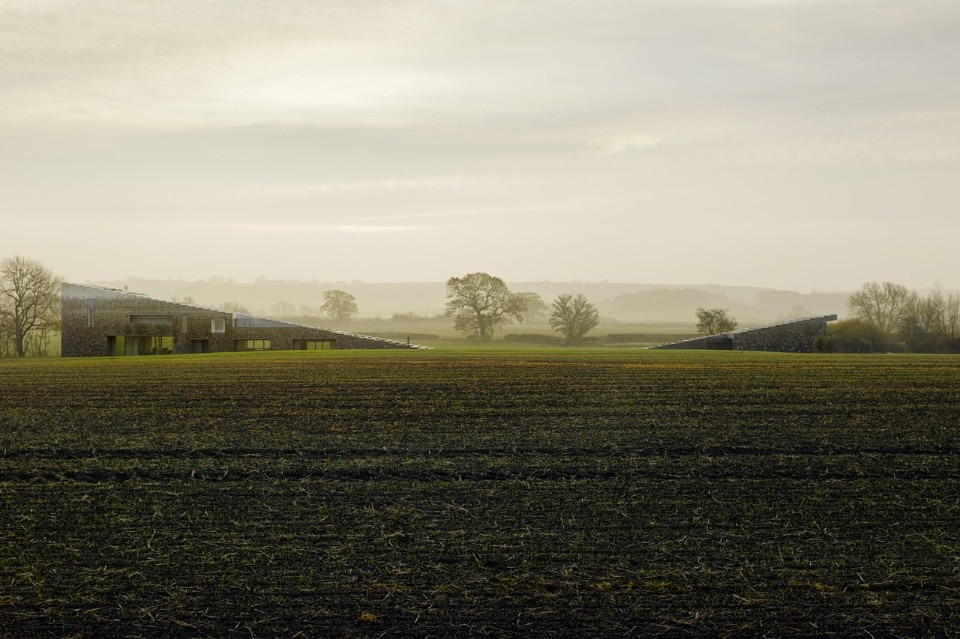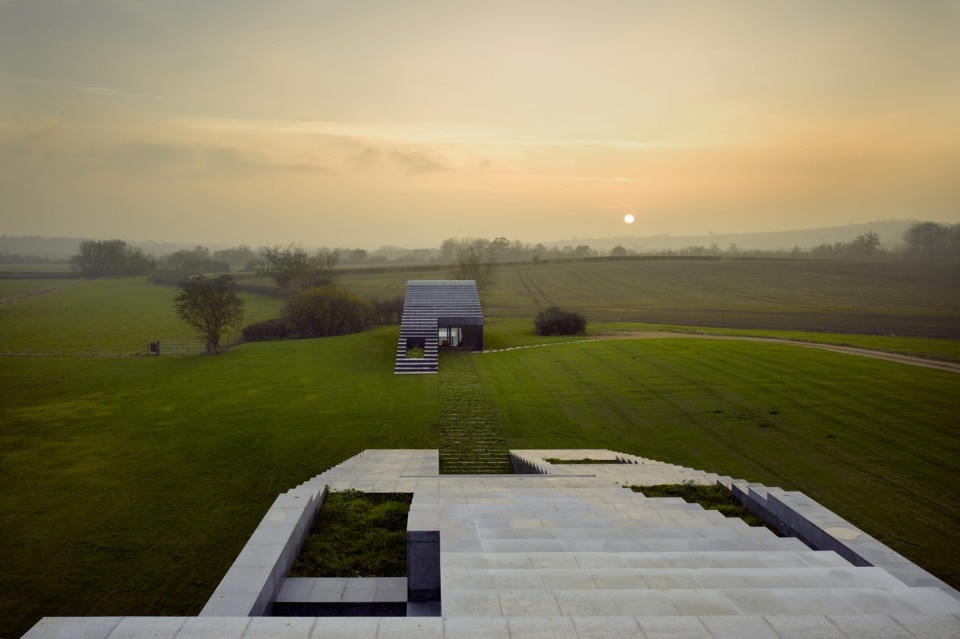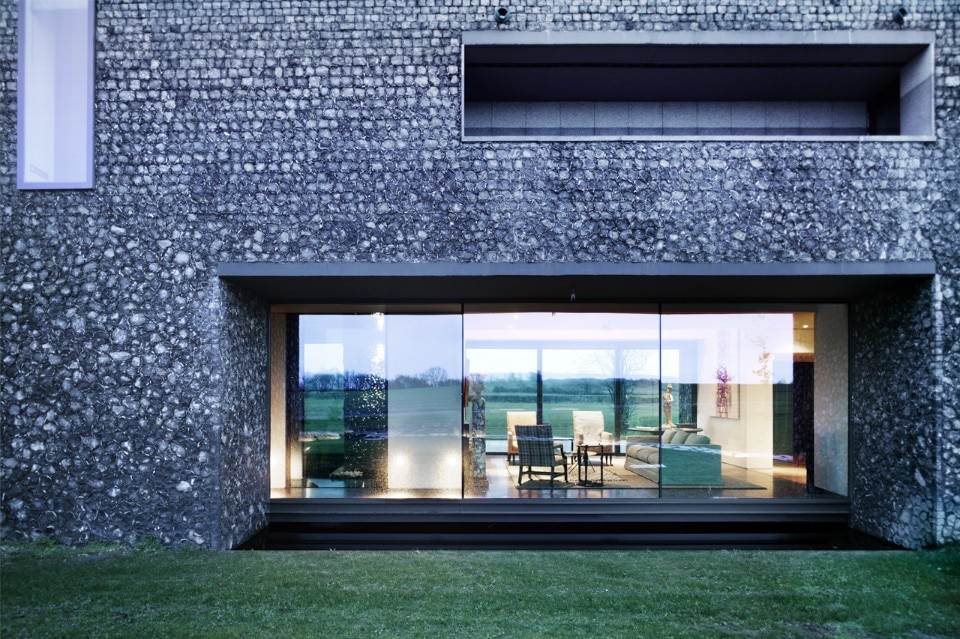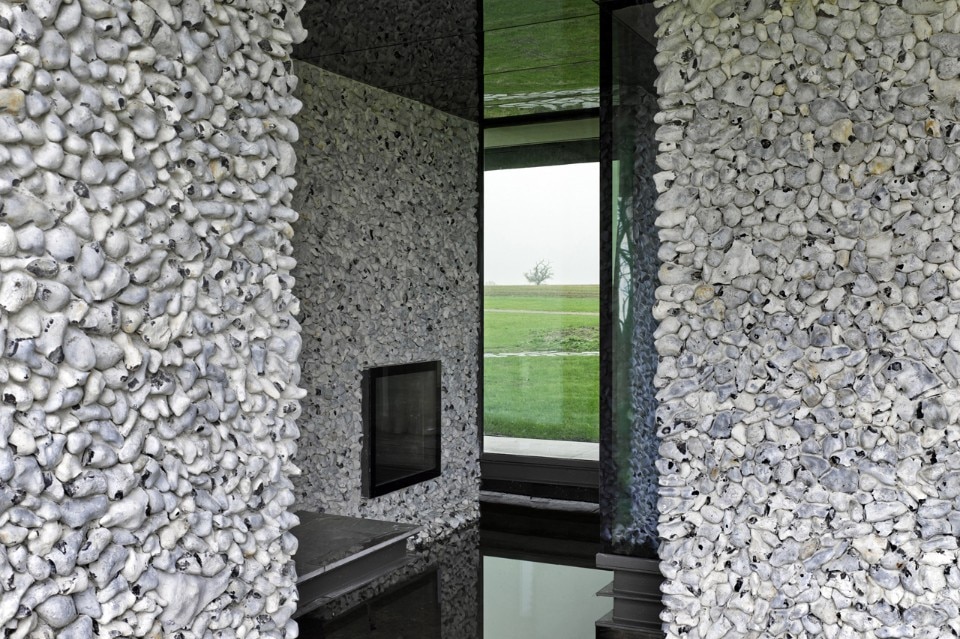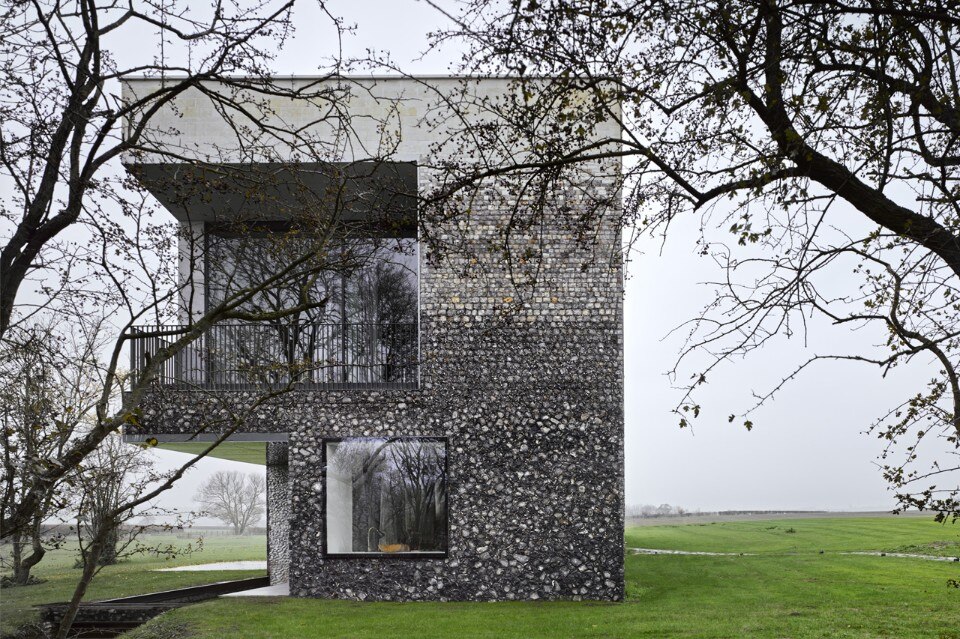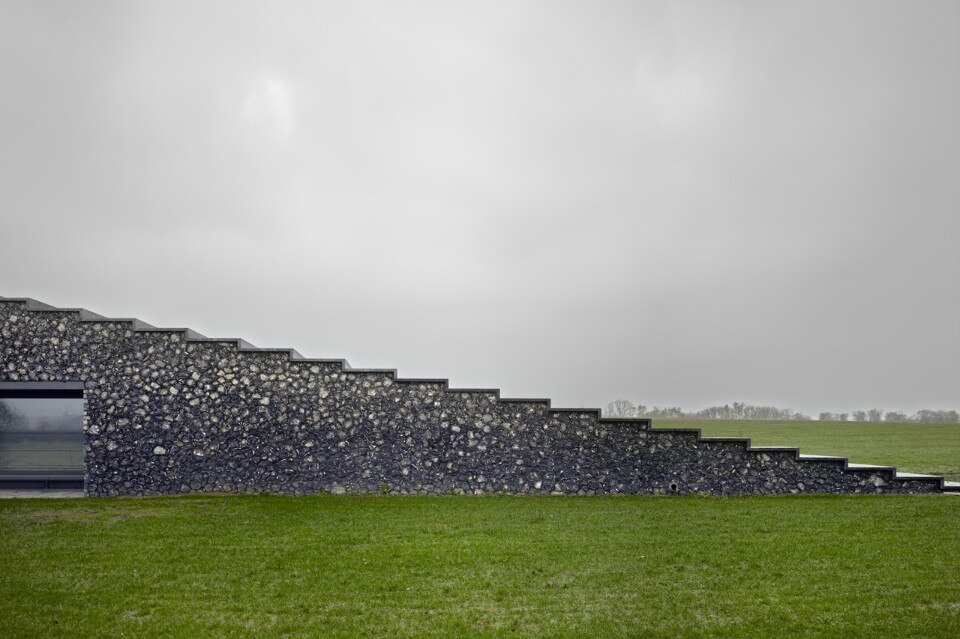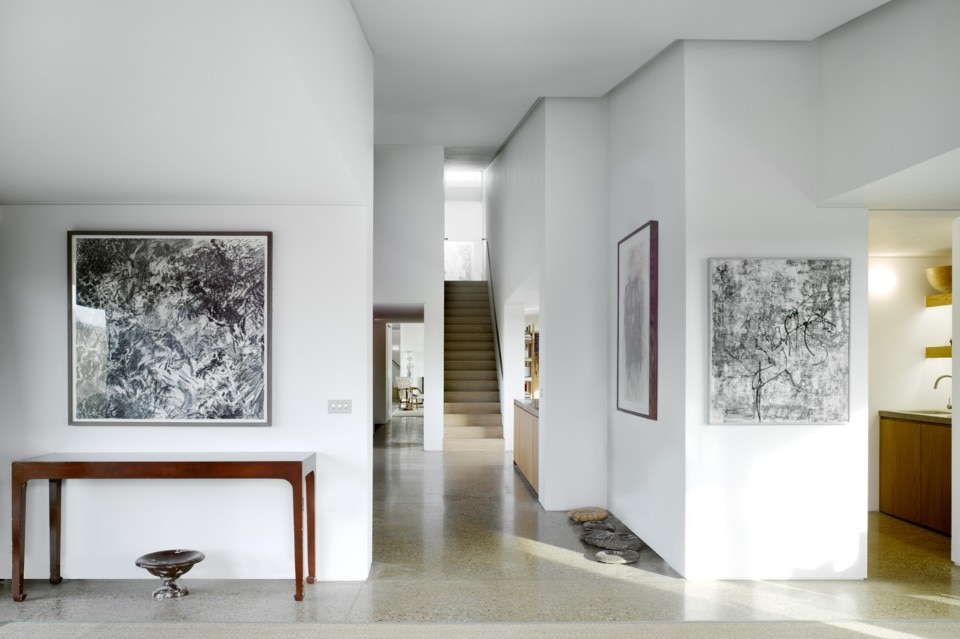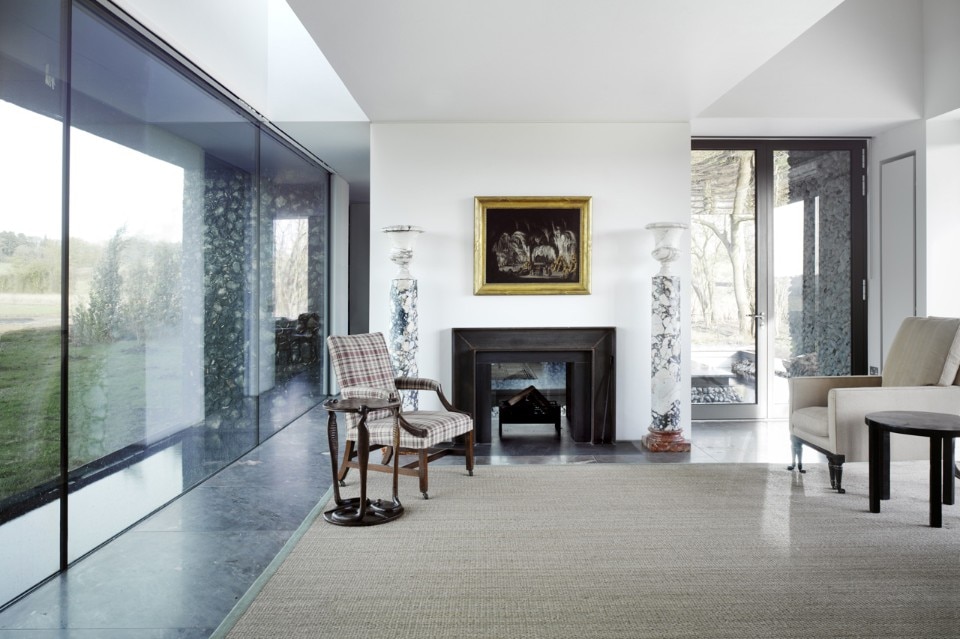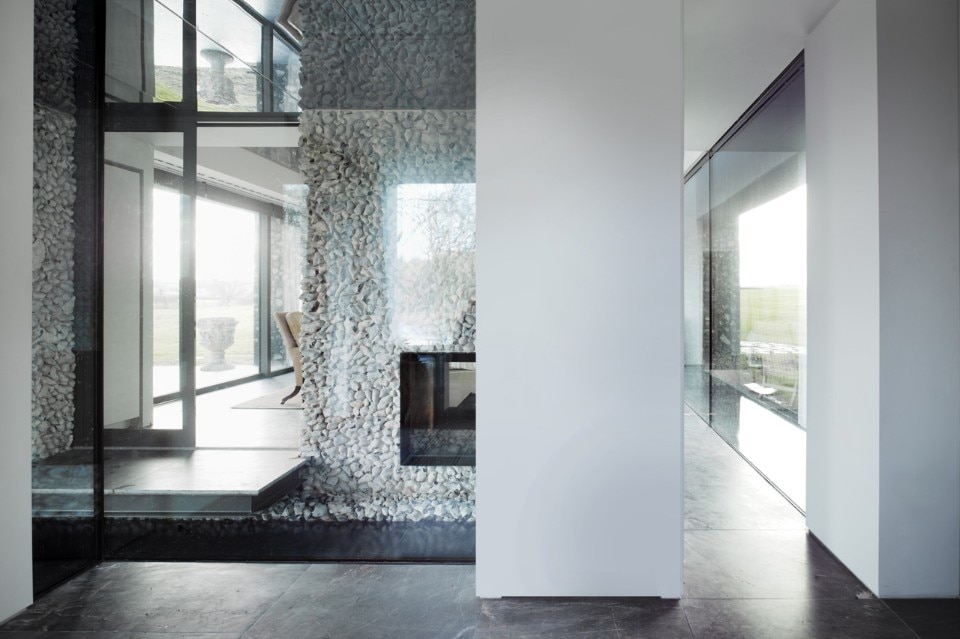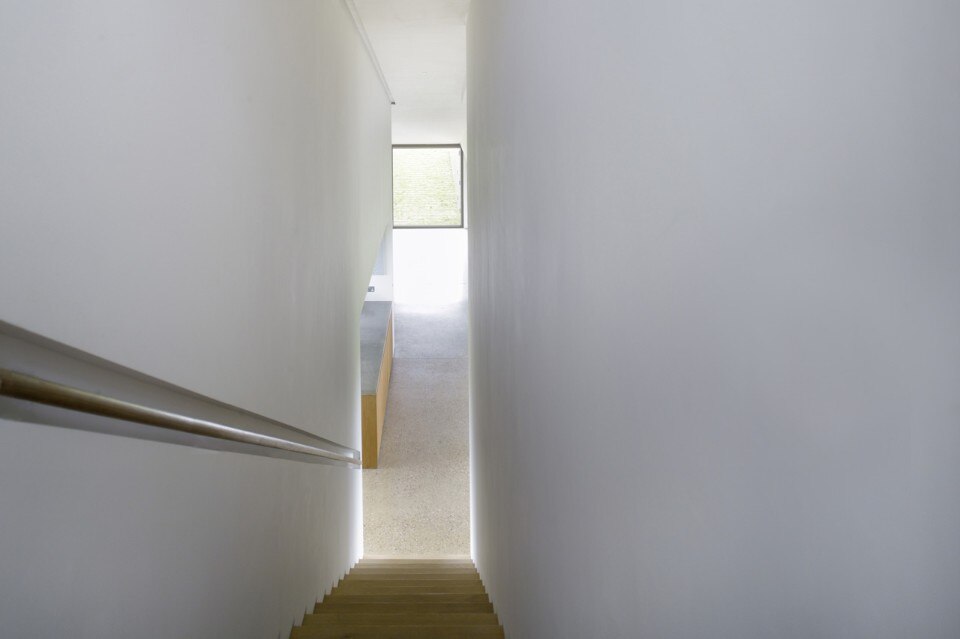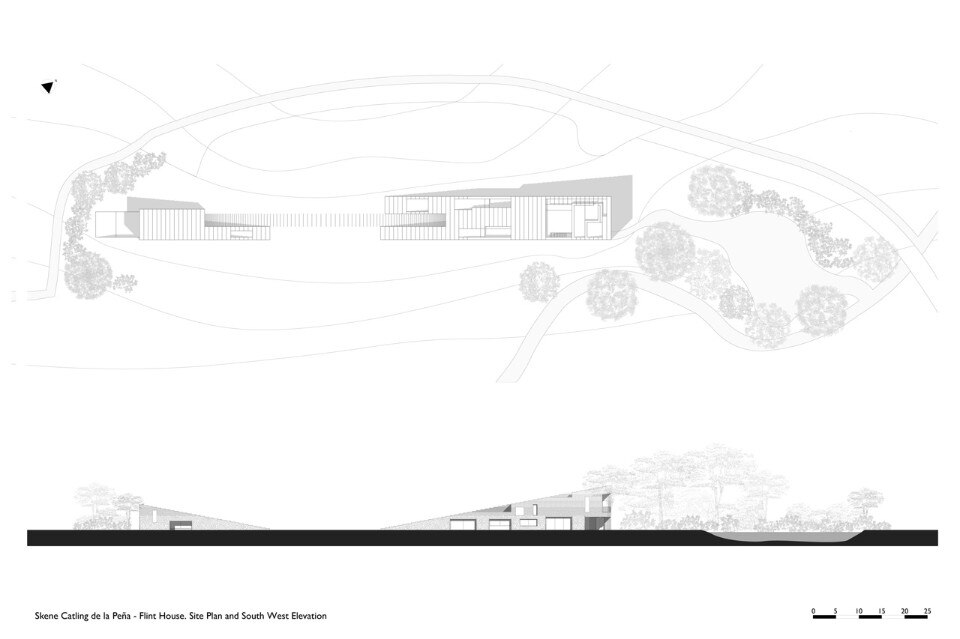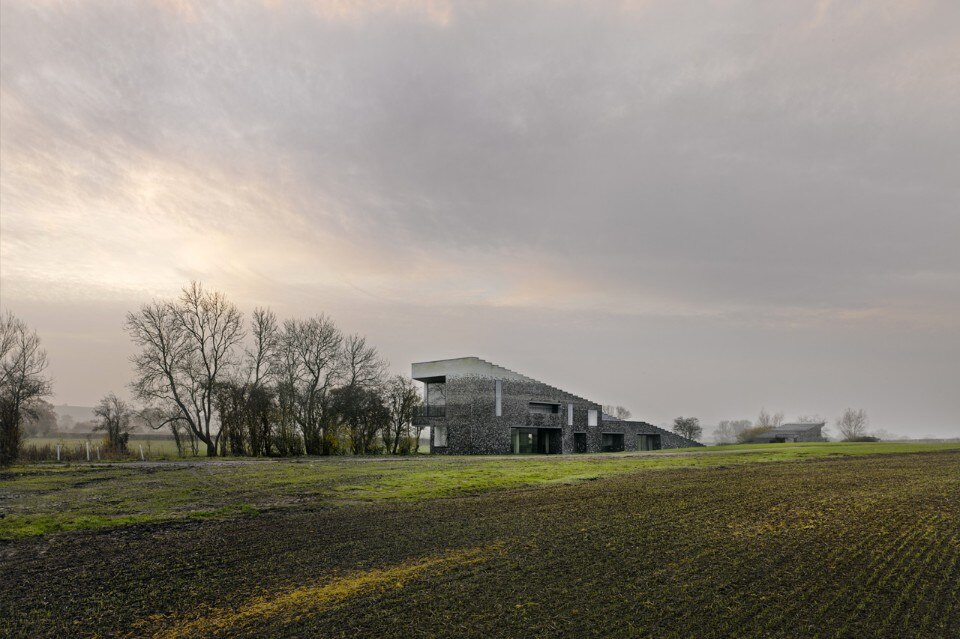
The site is a remote island, a strange, still, anomaly of wilderness within highly cultivated agricultural fields. The Flint House and Annex form two stepped, linear monoliths that appear pulled from the landscape as geological extrusions of infinite age, with the rough texture and rawness of their surroundings. The buildings are both viewing platforms and condensing lenses for the surrounding panorama.
The lowest courses of flint are blackest and rough hewn with large gallets in black mortar joints. The walls and terrazzo roofs fade in six coloured strata as the flint progresses up the building, from galleted black through finely knapped grays and finally into courses of long, narrow blocks of white chalk, where the building appears to dissolve into the sky. The watercourse is lined in raw flint nodules, used as it is found in the ground.
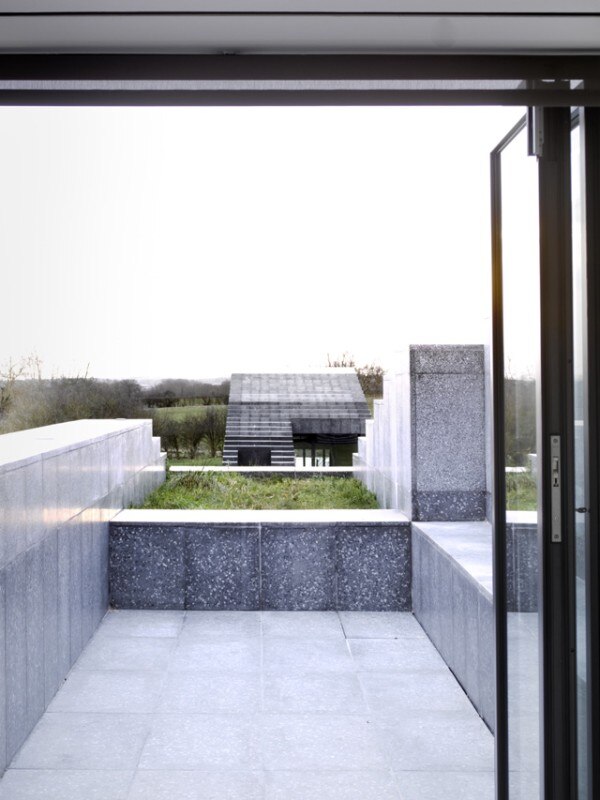
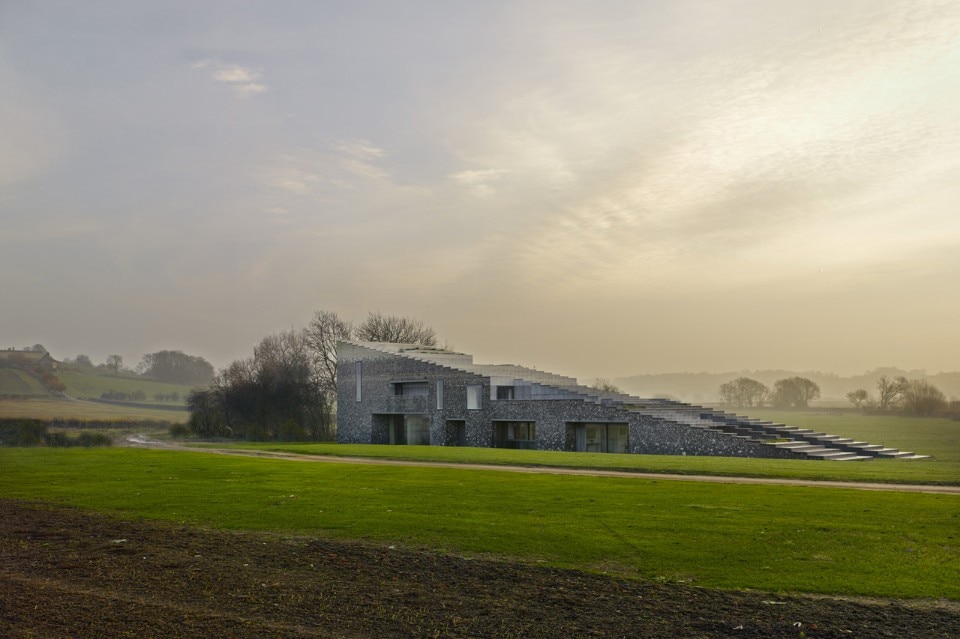
 View gallery
View gallery
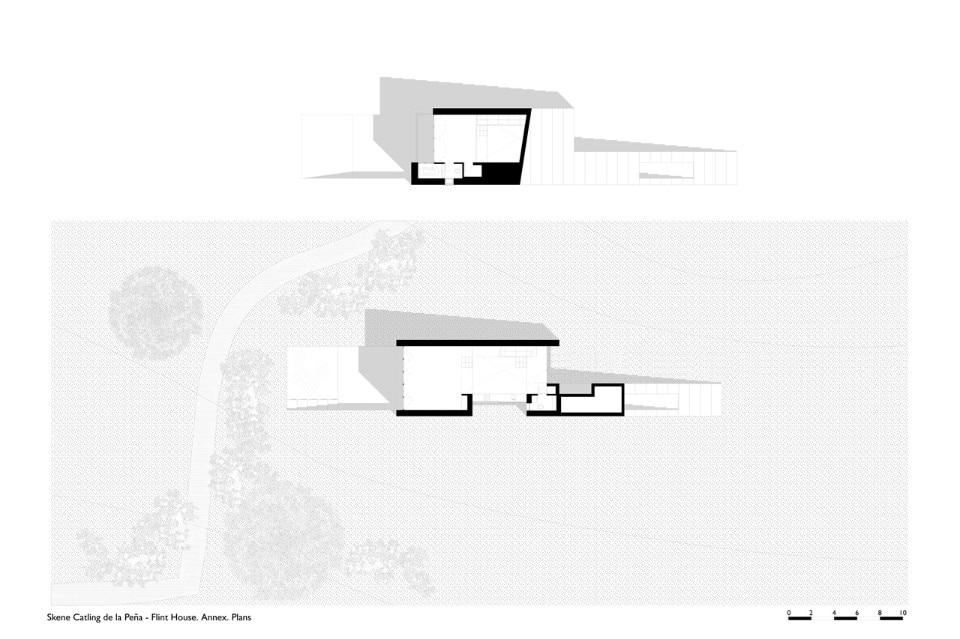
plans
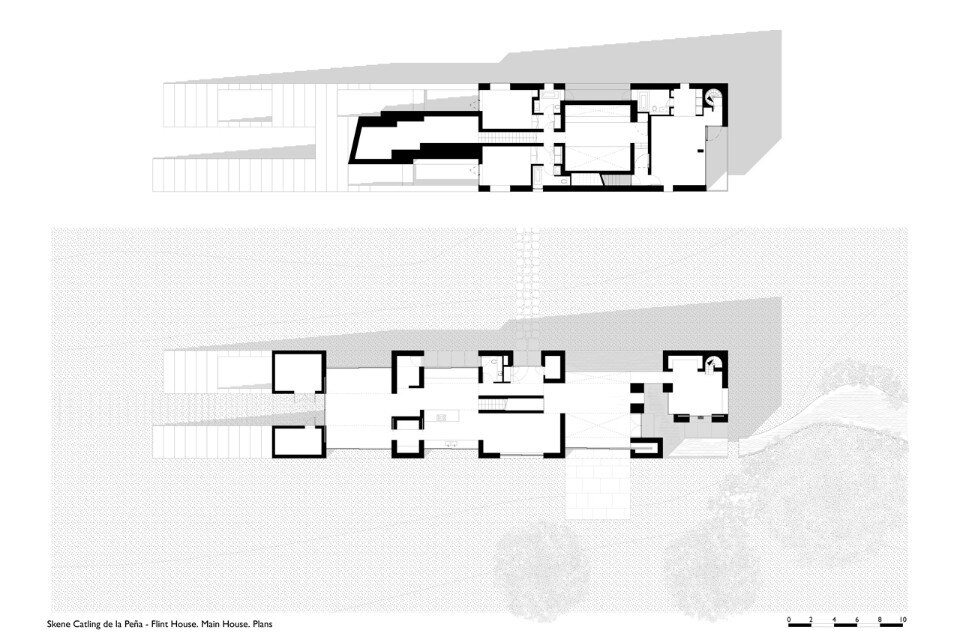
plans 2
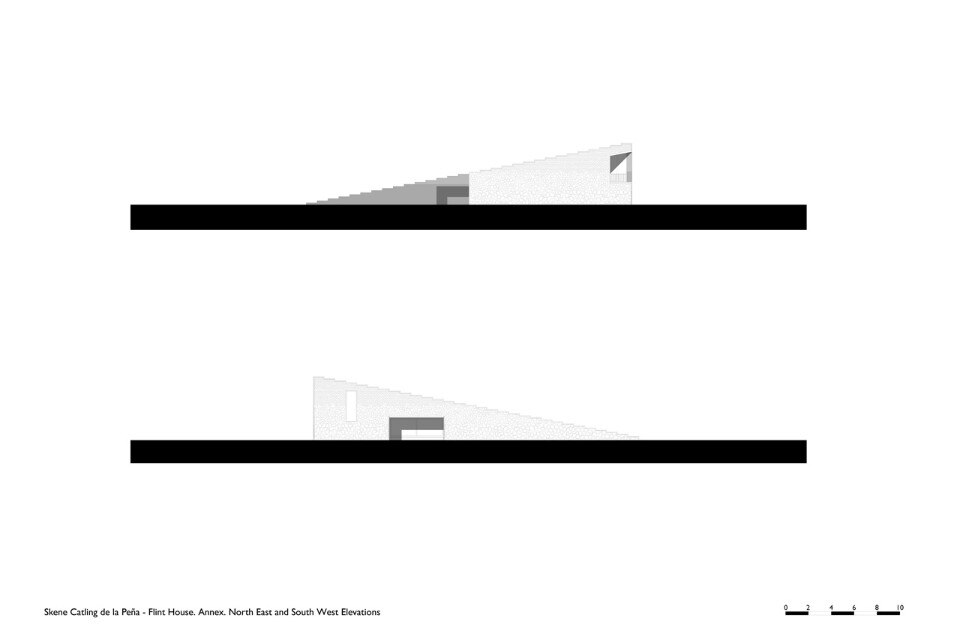
elevations
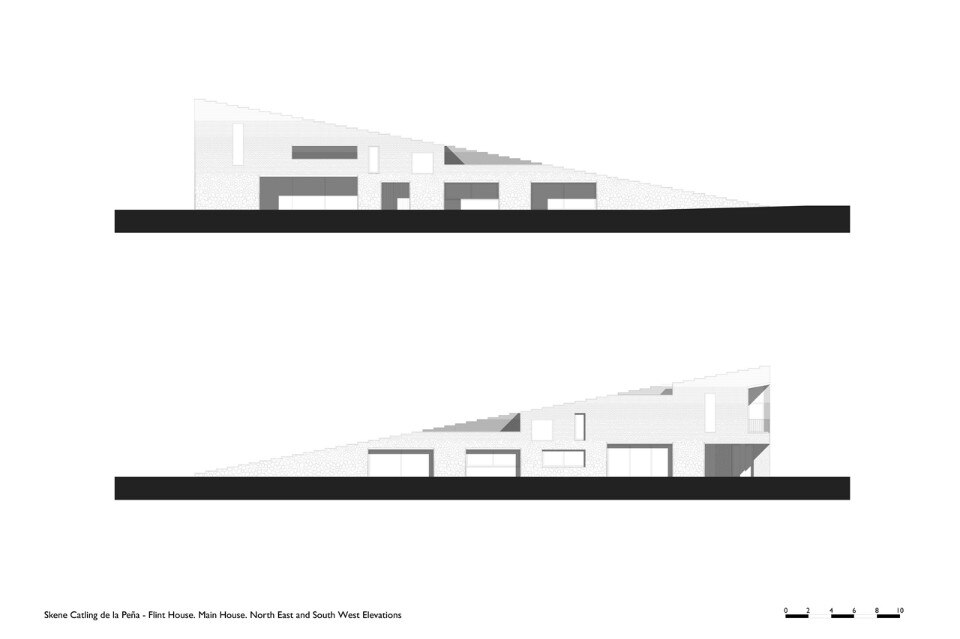
elevations
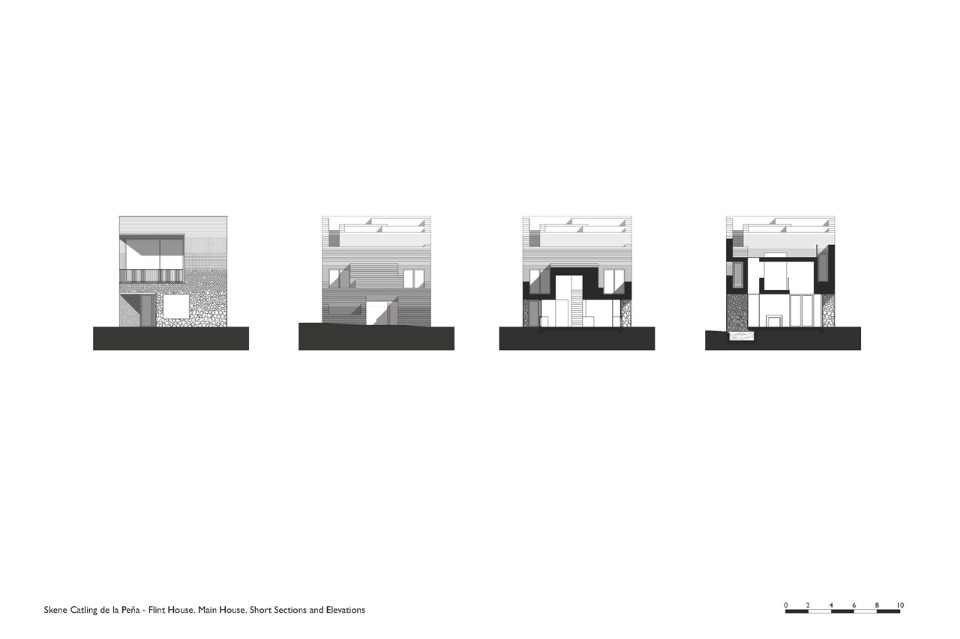
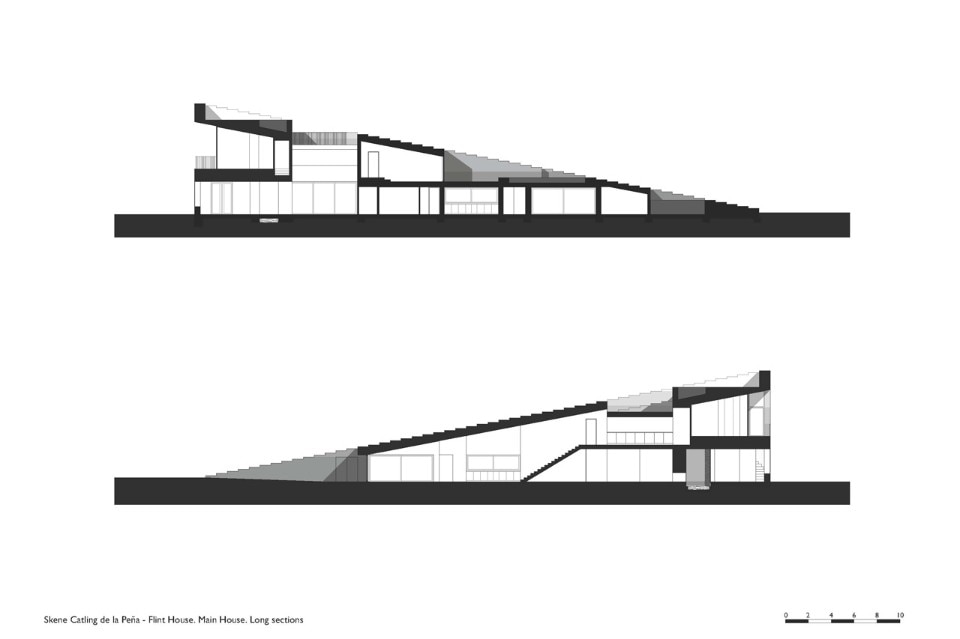
Flint House, Waddesdon, Buckinghamshire, United Kindgom
Program: single-family house and studio
Architects: Skene Catling de la Peña (Charlotte Skene Catling, Jaime de la Peña, Theodora Bowering, Amaia Orrico, Tomoaki Todome, Samuel Chisholm, Tom Greenall, Jordan Hodgson, Daniel Peacock)
Client: Lord Rothschild
Collaborators & Consultants: Marc Frohn
Client Advisor: Colin Amery
Landscape & Garden Designers: Mary Keen, Pip Morrison
Interior Designer: David Mlinaric
Structural Engineers: eHRW Engineers Haskins Robinson Waters, Adam Redgrove, Stephen Haskins
Mechanical + Electrical Engineers: Max Fordham Associates: Kai Salman-Lord
Civil Engineers: Infrastructure
Design Studio: Martin Jones
Quantity Surveyors: Selway Joyce
Partnership: Nick Tarrier, Ed Smith, Hui Meng
Flint Consultant: The Flint Man: David Smith
Lighting Consultants: Spellman Knowlton Lighting Design: Claire Spellman, Christopher Knowlton
Ecology Consultant: Bernwood Environmental
Conservation Services: Chris Damant
Area: 465 + 115 sqm
Completion: 2015


